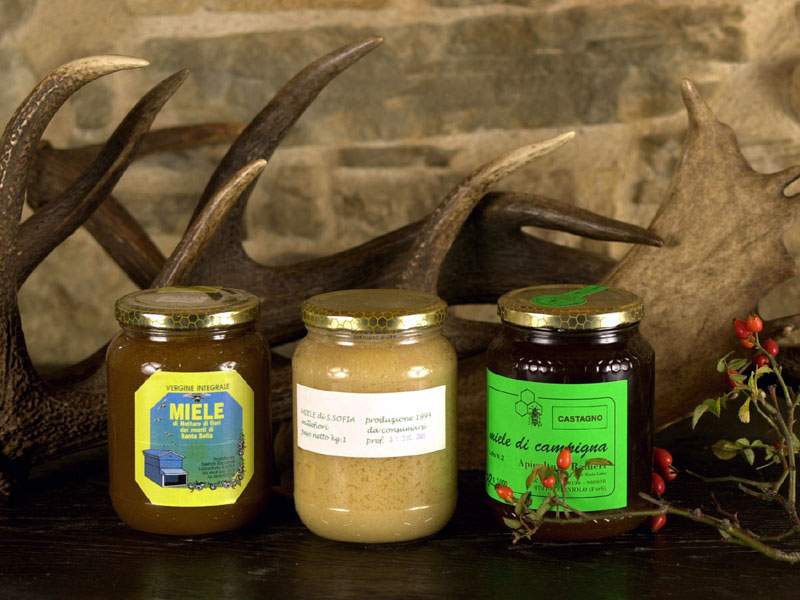Parco Nazionale delle Foreste Casentinesi, Monte Falterona, Campigna
www.parcoforestecasentinesi.itHoney
History
Without a doubt, describing the history of honey is not that easy. As a matter of fact, honey was born with bees, and the merit of man only consists of the discovery of its particular features. Over the centuries, the techniques to make the most of its exploitation have been improved. In the 4th century BC, Aristotle already described bee-keeping techniques: how to keep these tireless "workers" transforming the nectar transported by worker bees in honey through a progressive reduction of its content in water and at the same time including some substances they produce.
Current Production Area in the Park
All the Park Municipalities.
Description
Honey mainly consists of simple sugars, vitamins, enzymes, and mineral salts. It can have many colors and tastes. As a matter of fact, these two important aspects, the visual and the organoleptic aspects, are indissolubly linked to the flowers the honey is produced with and to the climatic conditions of the production area. Also its state can be different: liquid, creamy, or crystalline, an aspect linked to its floral and geographical origins.
Product Seasonality
The honey is a product you can found in the Park Municipalities all year long.










